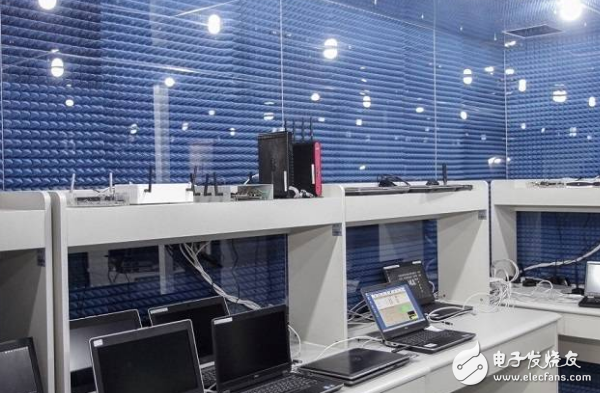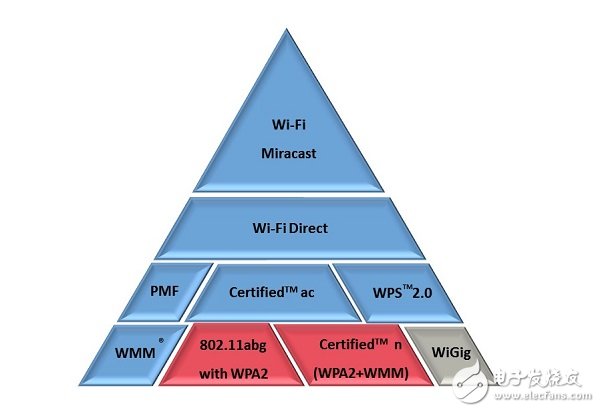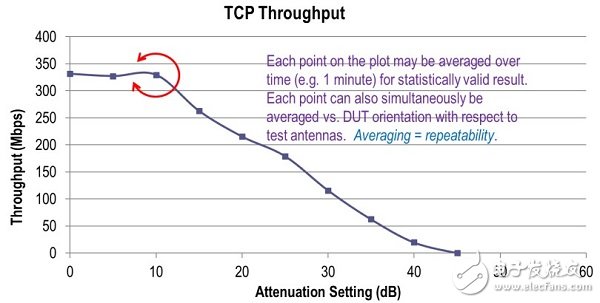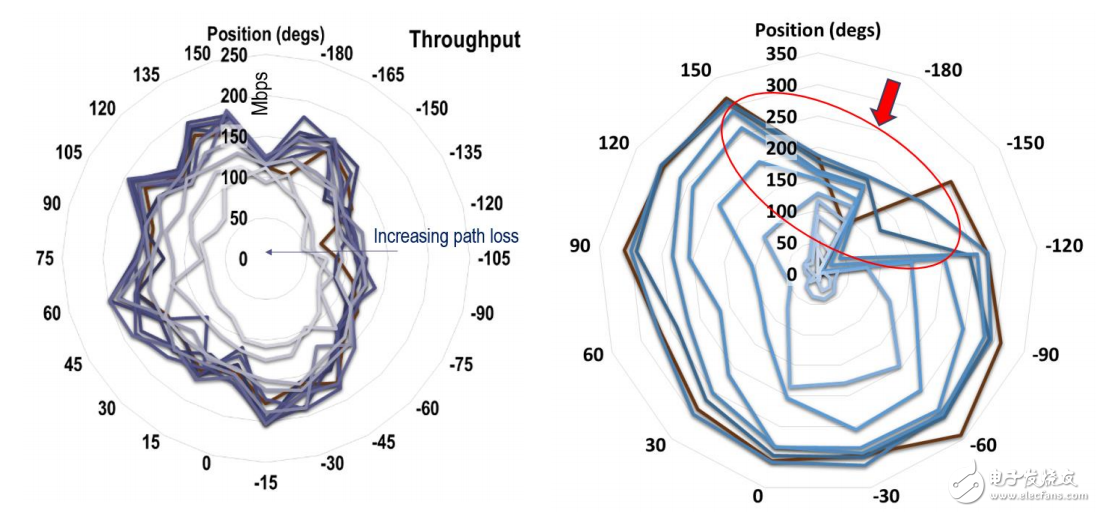
The Internet of Things is an application integration that combines all the resources and technologies that can be utilized, rather than a single technology.
The development of the Internet of Things is roughly divided into the application layer, the transport layer, and the perception layer. Combined with the application of big data and big data, the Internet of Things can be said to be combined with all the resources and technologies available today. The resulting application integration. From the perspective of industry, it is not covered by a single technology.
According to the author's observation, various terminal device manufacturers have regarded the Internet of Things as the battlefield of the next generation, and invested heavily in capital and manpower to avoid being eliminated in this generation.
Taking medical care as an example, telemedicine will become one of the future medical treatments. Countries have plans to practice telemedicine to become a formal service, and awareness technologies such as blood pressure/blood sugar/heart rhythm/mobile have been gradually established. Analytical technical data developed by major medical centers will be transmitted to major servo centers using BT, Wi-Fi and LTE as transmission interfaces. Combined with the application interface of APP, a set of combined monitoring, chronic medical treatment and emergency can be developed. Sending, and even emergency reporting systems, will have the opportunity to challenge traditional medical practices registered for medical treatment, health care, and emergency services. Everyone is observing whether the development of such an application will trigger the medical revolution of the next generation.
In addition, the Internet of Things is used in cars, the so-called car network, which requires mobile communication technology, fast data processing and secure firewall technology, all of which have huge imagination.
Since the IoT business opportunity is so large, and it is necessary to integrate such a large technology, the industry has formed several strategic alliance organizations/forums in an attempt to master or lead this technology.
The first part of this article will introduce the more active IoT organization. The second part will discuss in depth the author's service to the Yite Technology Lab. How to build an IOT transmission signal test environment to assist manufacturers in developing products. Learn how to test and validate and speed up time to market.
International main Internet of Things organizationThere are three organizations that are relatively active in IoT-related organizations. The time was first established at Allseen Alliance (end of 2013). The Framework group Alljoyn started its activities in 2011, and OIC and Thread Group were established at about the same time. (July 2014).
Because of the need to integrate various interfaces to communicate with the transmission platform, organizations have unanimously defined specifications such as architecture and technology to control the maturity of product objects.
(i) Open Interconnection Foundation (OCF)OCF, formerly known as OIC, was renamed OCF after the merger of Allseen Alliance in 2016. The architecture defined by OIC is IoTivity. The interface used is not mandatory. It is still dominated by NFC/Wi-Fi/BT/LTE. The main members are Samsung and Dell, IBM, Microsoft, Cisco, and the like. Business, Yi Te Technology is also a member of this organization.
1. Chairman: Daniel Park - Samsung Electronics
2. Working group
Certification Work Group
Standards Work Group,
Smart Home Task Group
UPnP Work Group
3. Language: Not specifically defined (C, C++, ...) OCF is currently working on software standardization and standards certification, and announced the OIC Logo on January 13, 2016.
Immediately after February 22-26, 2016, Beaverton City, held Plugfast #6. The Certification Procedure discussed in the certification section of the conference is as follows:
♦Test Tools - Develop/ Acquire/ Evaluate
♦Test Plans (maybe generated by individual Task Groups)
♦Certification Policy
♦Re-certification Policy
♦Plug-fest Guidelines
♦Certification Audit/Update/Enforcement Policy
♦Registry of OIC Certified Products
At the end of 2015, OIC announced the merger of the 15-year Universal Plug and Play Forum UPnP Forum, in addition to directly combining UPnP's existing technology, but also achieved UPnP's advantages in the smart home industry.
At the same time, OIC immediately established UPnP Work Group to maintain the original UPnP Forum operation. Its subgroups include UPnP AV Task Group, UPnP IoT Data Modeling Task Group, and UPnP Certification Task Group.
(2) Thread groupThe main members of the Thread Group are Nest (Google), Samsung and ARM. They also cover software chips and system vendors. There are no special plans and definitions on the Frame work. In particular, the transmission interface used is mainly applied to ZigBee ( IEEE802.15.4).
Compared with Wi-Fi, IEEE802.15.4 has the advantages of low power consumption and mesh network (Mesh) to automatically repair the link, but because Data Rate (250K) can only reach 250Kpbs, it also limits this technology to low network traffic applications. .
Organization of the Thread Group:
1. Chairman: Chris Boross (Nest)~2016.3.1
2. Working group:
♦Certification Committee (CC)
♦Testing Working Group (TWG) * Plugfest Working Group (PWG)* * Lab Qualification Working Group (LQWG)*
♦Technical Committee (TC)
♦Use Case Committee
♦Ecosystem Committee
Compared with Wi-Fi, IEEE802.15.4 has the advantages of low power consumption and mesh network (Mesh) to automatically repair the link, but because the Data Rate can only reach 250Kbps, this technology is limited to low network traffic applications.
Thread certified products need to be tested by the following behavior: A. Commissioning B. Network functionality C. Device operation in network
Internet of Things transmission signal testing and environmental developmentIn the IoT architecture where everything is connected, smart handheld devices such as mobile phones and tablets will be at the core of various application scenarios. Wireless communication is the most convenient way to connect online, which highlights the importance of the speed and quality of wireless communication. Therefore, when the terminal equipment manufacturers regard the Internet of Things as the battlefield of the next generation, in addition to actively making product layouts, they pay more attention to the performance of the product's "over the air" (OTA), which in turn brings out huge Testing and certification requirements.
In the practical application of the Internet of Things, following the definition of the architecture and communication interface defined by each organization, only the most basic working ability, but further compatibility and system stability, absolutely need more precise and multiple Testing to meet consumer expectations for user experience.
Due to the implementation of the overall application of the Internet of Things, it must be built under the condition that multiple transmissions are started at the same time. For example, after NFC senses, it is transmitted by WiFi to the cloud, while LTE is making a call and the USB port is also doing data transmission; the overall performance evaluation cannot be based on the data of the single performance test. In addition to Firmware loading considerations, interference between simultaneous operation of multiple interfaces can also be affected.
The following sections will introduce the customized environment for the actual application and consumer behavior level of the "Wi-Fi transmission layer signal test" in the overall environment of the Internet of Things. In addition, it also targets 'LoRaWAN'. 'NB-IoT' and 'Wireless Charging' for further explanation.
(1) Wi-Fi transmission layer signal testSince Wi-Fi plays a very important role in the transport layer, it is necessary to establish the WFA basic test capability and the customized IoT Validation environment for Wi-Fi transmission. Built on the WFA standard test, it includes WPA2, WMM, Certified n, WPS2.0, Certified ac, CWG-RF, and is based on the pyramid bottom network stack as a basic test.

In the Wi-Fi IoT environment verification, it is necessary to focus on the security encryption and transmission performance (Throughput) traffic test that the Internet of Things pays particular attention to.
In the custom test, Yite Technology implements a higher level environment with OctoBox as follows:
1. For Wi-Fi transmission efficiency measurement, Octobox uses the Multipath Emulation (MPE) defined by IEEE802.11 to achieve performance similar to that of Wi-Fi users in actual use space, and brings the following three main transmission energy effects. Test items:
(1) Transmission efficiency vs. distance: Simulate the distance with the program attenuator and cooperate with the measurement system to obtain the corresponding values ​​of the attenuation value (distance) and the Throughput.

(2) Transmission efficiency vs. Azimuth: Simulate the distance with the program attenuator and match the turntable with the measurement system to obtain the attenuation value (distance) and the corresponding data of the sample angle to the throughput.

(3) Transmission efficiency vs. Interference: The above tests can be used with other wireless signals (Wi-Fi, BT, Microwave) for interference testing.
2. Roaming Test: Simulate the change of AP signal strength when the mobile device moves with the Octobox system, and measure the time required for roaming.

LoRa technology is actually an IoT wireless communication technology developed in recent years. It adopts an unlicensed open frequency band and has long-distance and low-power transmission characteristics, including transmission distances ranging from 1 km to 10 km. The range between the two, even up to 20 kilometers away, and the built-in battery of the IoT device can last for more than 10 years, and the cost of installing and deploying the enterprise is also low.
♦ Low power consumption and battery life of 10 years
♦Low speed, less than 10kbps
♦ Unlicensed band
♦ There is currently only one IC supplier – SemTech
♦ Star-shaped dots, long distance
♦Electric meters, smoke detection, etc.
(3) NB-IoT transmission layer signal testNB-CIoT was jointly proposed by Huawei, Qualcomm and Neul. NB-LTE was proposed by Ericsson, Nokia and other manufacturers. NB-LTE is more compatible with existing LTE, and its main advantage is that it is easy to deploy. NB-IoT can be considered as a fusion of NB-CIoT and NB-LTE. The advantages are as follows:
♦ Medium and low power consumption, battery life also claimed 10 years
♦ medium and high speed, 100's kbps
♦ There are already many chip suppliers (Multi-vendor)
♦ long distance
♦High speed transmission
(4) Wireless charging signal testThere are currently two camps for Wireless Charging, as described below.
1. Airfuel (A4WP, PMA) camp
♦ Qualcomm, Samsung, Duracell Powermat and Intel, Starbucks, Google and AT&T
♦6.78MHz magnetic resonance technology standard
♦ This frequency is an integer multiple of the 13.56MHz of NFC/RFID, which will generate strong signal interference between the two.
♦ The efficiency of the magnetic resonance program is 85%, and the actual measurement is only about 67%.
♦Qi-WPC (Wireless Power Alliance) camp
♦ Nokia, HTC, LG, Sony, Samsung, Qualcomm, and new Apples
♦87~205KHz, 300KHz electromagnetic induction
♦Charging efficiency is 80%, measured 50%~60%
However, the Airfuel operating frequency will interfere with the NFC, and this problem must be solved in practical applications. WPC has more products to introduce at present. Both specifications need to further improve the charging efficiency under normal use in the future. It is just around the corner to introduce wireless charging in the future.
Glass Reinforced Plastic Cable Tray
Glass Reinforced Plastic Cable Tray,Fiberglass Cable Trays,Fiberglass Cable Ladder,Fiberglass Ladder Tray
Rayhot Technology Group Co.,Ltd , https://www.cnrayhot.com